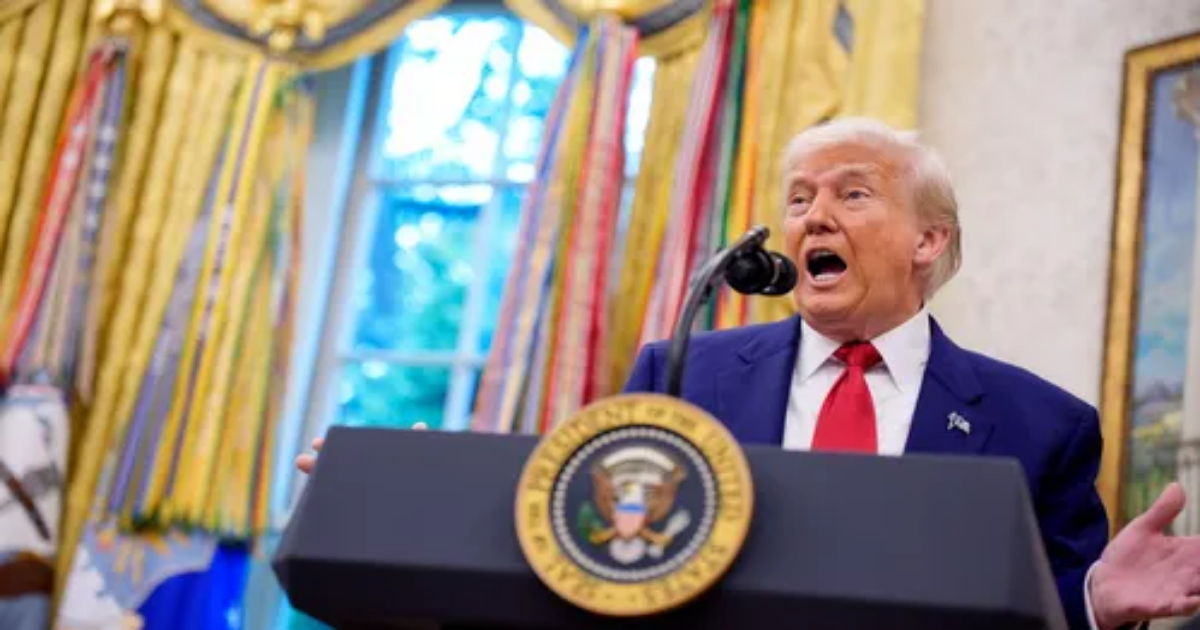
- “TACO trade” was coined this month by Financial Times columnist Robert Armstrong to describe how many investors have responded to Trump’s whiplash tariff policy.
- The Trump administration has announced new or revised tariff policies more than 50 times since Trump’s Jan. 20 inauguration.
WASHINGTON ― President Donald Trump is no fan of an emerging nickname on Wall Street mocking his on-again, off-again approach to tariffs.
Trump lashed out at a reporter on May 28 who asked for his response to financial analysts embracing a new term called “TACO trade.” The acronym stands for “Trump always chickens out” ‒ a jab at the president’s propensity to impose or threaten steep tariffs on imports, only to later back off.
“Oh, I chicken out. Isn’t that nice? I’ve never heard that,” Trump said during the exchange, before defending his recent decisions to slash his tariffs on China for the next 90 days and extend his deadline for a 50% tariff on goods from the European Union until July 9.
More: Trump, China agree to slash tariffs for 90 days: What to know
“Six months ago, this country was stone cold dead. We had a dead country. We had a country that people didn’t think it was going survive,” Trump said. “And you ask a nasty question like that. It’s called negotiation.”
“TACO trade” was coined this month by Financial Times columnist Robert Armstrong to describe how many investors have responded to Trump’s whiplash tariff policy by buying into the market dip that follows Trump’s tariffs, on the assumption that the market will rebound once Trump flip flops.
What the Trump administration means for your wallet: Sign up for USA TODAY’s Daily Money newsletter.
More: Trump says he will delay 50% tariffs on EU imports until July 9
Trump has backed off from some of his steep tariffs repeatedly since announcing a series of hefty duties on imports from most of the world’s countries on April 2 ‒ a moment he hailed as “Liberation Day.”
The Trump administration has announced new or revised tariff policies more than 50 times since Trump’s Jan. 20 inauguration, according to an analysis from the Washington Post. But several actions were quickly rescinded.
After the stock market plunged in response to the levies, Trump paused the reciprocal tariffs for most countries, lowering the tariffs to a universal 10% rate. He initially kept 145% tariffs in place for China, but later lowered it to 30%, where it remains. He also paused tariffs he set for Canada and Mexico, created tariff carve-outs for electronic imports and most recently backed off a June 1 deadline he set for 50% tariffs on goods from the EU.
“You call that chickening out?” Trump said, arguing he reduced the tariffs on China ‒ which he acknowledged had gotten too high ‒ after Beijing agreed to open its country to trade. He said he extended the EU deadline after European leaders called and asked “please, let’s meet right now” to discuss trade policy.
“Don’t ever say what you said because that’s a nasty question,” Trump said.
Reach Joey Garrison on X @joeygarrison.
